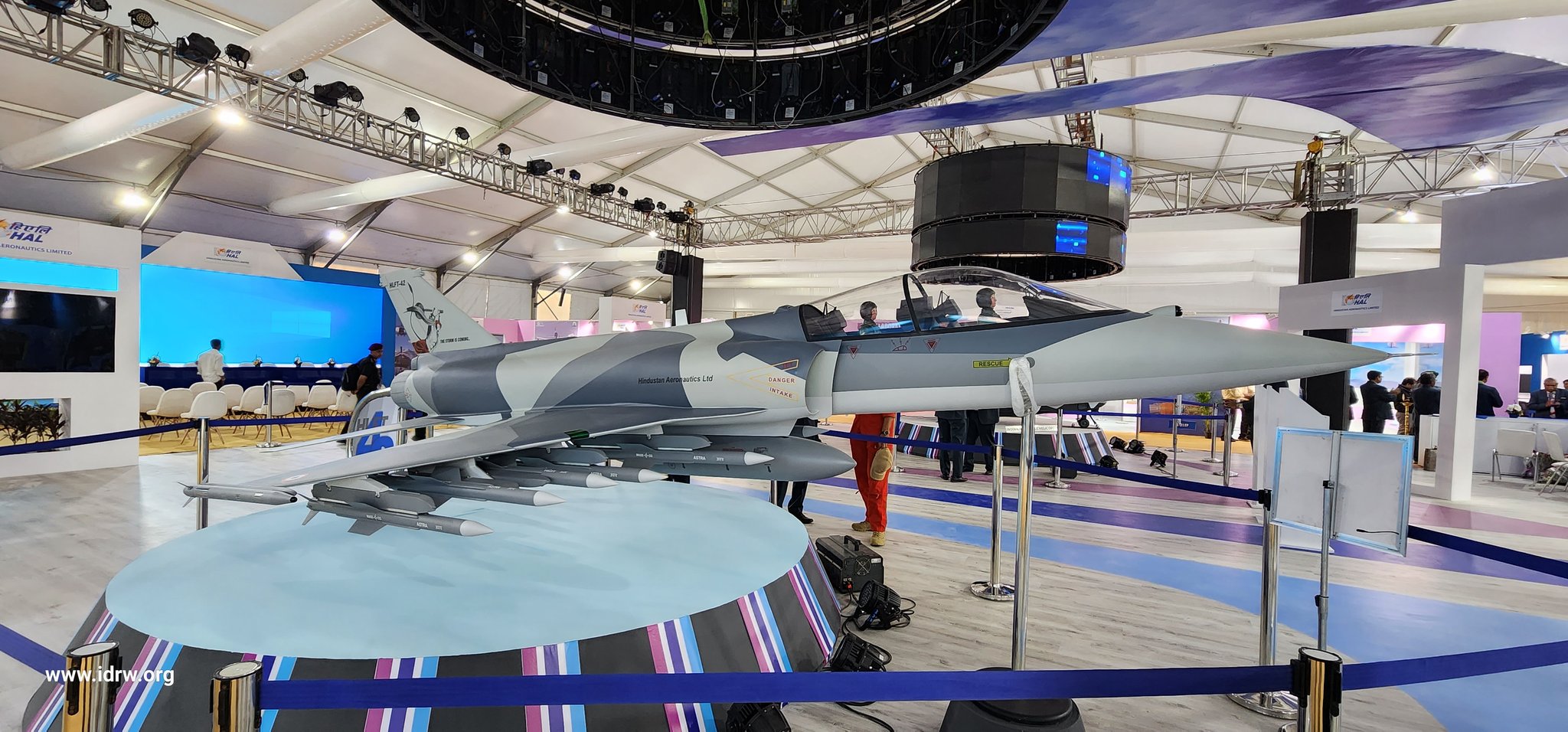SOURCE: RAUNAK KUNDE / NEWS BEAT / IDRW.ORG


Hindustan Aeronautics Limited (HAL) officials, speaking to idrw.org at Aero India 2025, provided an update on the proposed Hindustan Lead-in Fighter Trainer (HLFT-42), a next-generation supersonic trainer jet that made its debut at Aero India 2023 but was notably absent from this year’s event in Bengaluru. The aircraft, initially unveiled as a versatile platform capable of serving as both an advanced trainer and a light combat jet, is undergoing further refinements in design and additional features following detailed feedback and discussions with the Indian Air Force (IAF).
Since its initial showcase at Aero India 2023, the HLFT-42 has been in a phase of continuous improvement. HAL officials revealed that the IAF, during subsequent talks, provided valuable insights into the aircraft’s design, performance, and potential applications. These discussions have led to a comprehensive refinement process, not only in terms of aerodynamics and structural design but also in enhancing its avionics, weapon integration, and operational flexibility. Wind tunnel testing and simulations have been key components of this process, ensuring that the HLFT-42 meets the high standards required for both training and combat roles.
HAL’s discussions with the IAF have also highlighted a broader strategy for pilot training. The IAF is keen to induct the Intermediate Jet Trainer (IJT-36) Yashas for its Stage-II requirements, addressing the need for a modern platform to replace aging aircraft like the HJT-16 Kiran. Simultaneously, the IAF sees the HLFT-42 as a natural progression for Stage-III training, replacing or supplementing the Hawk 132 AJTs, which, while upgraded, lack the advanced sensors, radars, and combat capabilities required for preparing pilots for next-generation fighters.
HAL officials emphasized that the IAF’s interest extends beyond training. The HLFT-42 is now being developed with a dual role in mind: as a combat-capable aircraft that can be deployed in wartime missions and as a trainer during peacetime. This versatility is driven by the IAF’s need for cost-effective, multi-role platforms that can adapt to both training and operational demands. The aircraft’s ability to carry advanced weapons, including close-combat missiles like ASRAAM and beyond-visual-range missiles like Astra, positions it as a light fighter jet, capable of supporting frontline operations when required.
One of the most intriguing aspects of the HLFT-42’s evolution is its proposed role as a mothership for the CATS Warrior loyal wingman program. The CATS Warrior, another HAL initiative co-developed with NewSpace Research & Technologies, is designed as a low-observable, twin-engine unmanned combat air vehicle (UCAV) that operates alongside manned fighters, extending their reach and capabilities in contested environments. At Aero India 2023, the CATS Warrior was showcased as a potential “loyal wingman,” controlled by a mothership like the Tejas Mk1A.
However, HAL officials now suggest that the HLFT-42 could serve as an alternative mothership, leveraging its advanced avionics, payload capacity, and combat readiness. This role would allow the HLFT-42 to coordinate with the CATS Warrior during missions, acting as a command-and-control platform while also retaining its training and combat functions.
This development aligns with the IAF’s interest in manned-unmanned teaming, where aircraft like the HLFT-42 and CATS Warrior work together to enhance situational awareness, deliver precision strikes, and reduce pilot risk. HAL’s refinement of the HLFT-42 includes upgrades to its communication systems, sensor suite, and software to ensure seamless integration with the CATS Warrior, making it a versatile combat trainer that can switch between roles depending on the operational context—peace or war.
Despite the progress, the HLFT-42 program faces challenges, particularly in engine selection and final configuration. Initial plans considered engines like the GE F414 or the indigenous Kaveri, but HAL is still evaluating options to ensure the aircraft achieves the necessary thrust for supersonic performance and combat readiness. Industry reports suggest that delays in engine development, similar to those faced by other HAL projects, could push the HLFT-42’s rollout to the early 2030s.
NOTE: Article cannot be reproduced without written permission of idrw.org in any form even for YouTube Videos to avoid Copyright strikes. Websites doing illegal reproductions will get DMCA and Legal Notices.